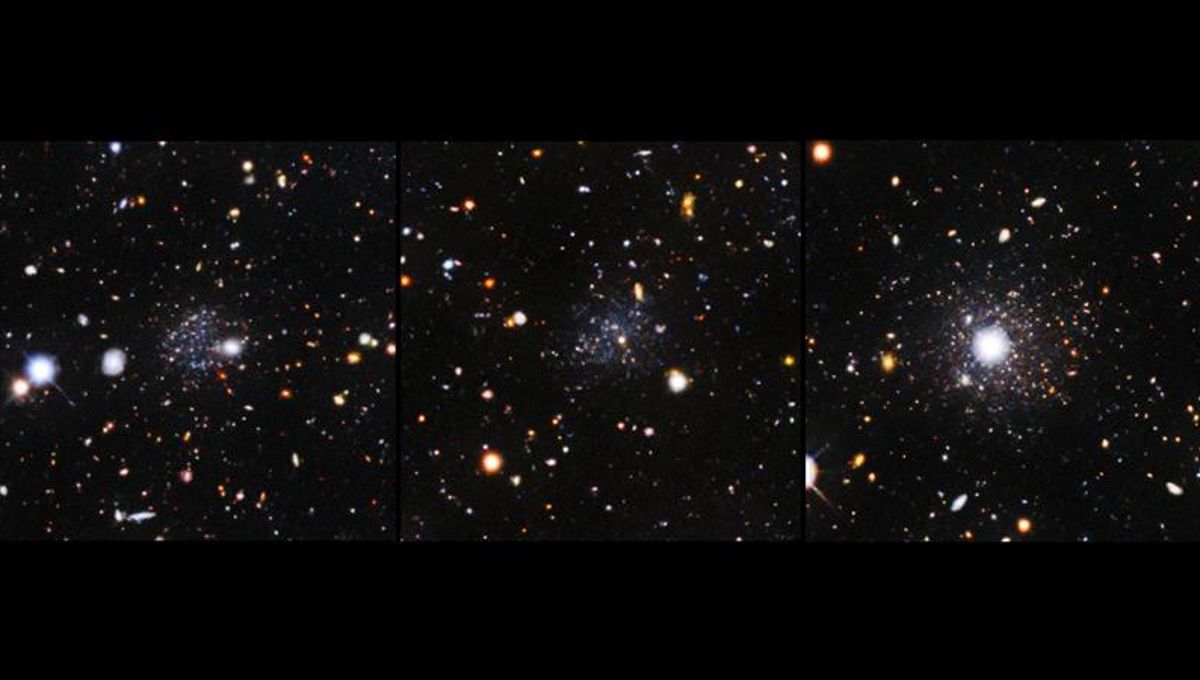
Astronomers have announced the discovery of three new ultra-faint dwarf galaxies, the likes of which have not been seen before. These galaxies are small and isolated, with just a few hundred to a thousand stars and no gas. This is dramatically different from our massive galaxy, which has around a hundred billion stars and is surrounded by many dwarf galaxies, such as the Large Magellanic Cloud, all much bigger than these three.
The galaxies are located in the constellation of Sculptor and have been given the names Sculptor A, B, and C. All their stars are old, indicating that they stopped making new ones a very long time ago. They are so small and faint that they weren’t automatically picked up by traditional computer algorithms – they had to be discovered by eye.
“It was during the pandemic,” the study’s first author, astronomer David Sand from the University of Arizona, said in a statement. “I was watching TV and scrolling through the DESI Legacy Survey viewer, focusing on areas of sky that I knew hadn’t been searched before. It took a few hours of casual searching, and then boom! They just popped out.”
Sculptor C might be a distant satellite of galaxy NGC 300, a galaxy about 6 million light-years away. Sculptor A is closer to us, while Sculptor B is likely further away. Still, they are far away from large neighbors. They are all pretty isolated, and that is an issue when it comes to explaining why they stopped making stars in the early universe.
The gravitational influence of a much larger galaxy nearby can cause the loss of precious star-forming gas. These ultra-faint dwarf galaxies are too small to hold onto it if a bigger galaxy is around – but this is not the case here.
The researchers suggest that the death knell for these galaxies was the Epoch of Reionization, the period in the early universe when the light of young bright stars stripped the electrons from the hydrogen gas present in the universe. For small galaxies such as these, the reionization process might have boiled away all the gas that would have been used to make stars.
“We don’t know how strong or uniform this reionization effect is,” explained Sand. “It could be that reionization is patchy, not occurring everywhere all at once. We’ve found three of these galaxies, but that isn’t enough. It would be nice if we had hundreds of them. If we knew what fraction was affected by reionization, that would tell us something about the early Universe that is very difficult to probe otherwise.”
The team is planning to use these galaxies to train a neural network to identify more of these objects, speeding up discoveries. The galaxies were followed up using the Gemini South’s Gemini Multi-Object Spectrograph (GMOS) which provided the details that they stopped forming stars a very long time ago.
“The Epoch of Reionization potentially connects the current day structure of all galaxies with the earliest formation of structure on a cosmological scale,” added Martin Still, NSF program director for the International Gemini Observatory. “The DESI Legacy Surveys and detailed follow-up observations by Gemini allow scientists to perform forensic archeology to understand the nature of the Universe and how it evolved to its current state.”
The results were presented at the American Astronomical Society 245th meeting and are published in The Astrophysical Journal Letters.
Source Link: Newly Discovered Stellar "Ghost Town” Galaxies Were Strangled A Long Time Ago